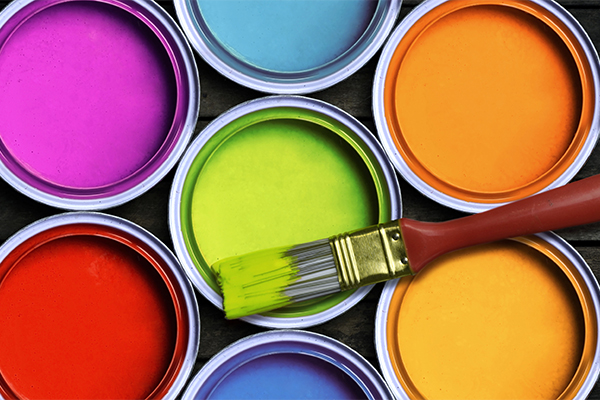Imagine driving your beloved car, the sun casting a gleam across its meticulously polished surface. Suddenly, you notice a jarring reality—swirls and scratches marring that perfect finish. It’s a disheartening sight that can dampen any car enthusiast’s spirit. Fear not, for paint correction holds the key to transforming your vehicle back to its former glory. This process is meticulous yet rewarding, promising to restore not only the aesthetics of your car but also the pride that comes with ownership.
Before diving into the heart of paint correction, it’s essential to understand what causes these unsightly swirls. Often, they arise from common practices like improper washing, environmental contamination, and even the natural wear of a vehicle over time. These microscopic scratches seem trivial but can prevent light from reflecting evenly, leading to a dull appearance. Gaining insight into the nature of these imperfections is the first step in restoring your car’s paint and reinstating that vibrant, reflective shine.
Now, envision the moment when you realize paint correction is not just a series of steps but an art form. From the initial assessment to the final polish, each phase plays a crucial role in rejuvenating your vehicle. Start with a comprehensive evaluation of your car’s surface. Utilize a good LED lighting system to shine a light on the surface imperfections. When viewed under the right conditions, swirls become apparent, guiding you in understanding the severity of the paint’s condition.
After assessing, the next step involves meticulously preparing the surface. This preparation is fundamental. Begin with a thorough wash using a pH-neutral car shampoo to remove dirt, grime, and contaminants. A two-bucket wash method is advisable—one for rinsing your wash mitt and the other for soapy goodness—ensuring that you minimize any potential scratches during this cleansing phase. Follow up with a clay bar treatment. This step captivates; it grabs your attention with its efficiency in lifting away embedded particles that remain stubbornly attached to the paint.
Upon achieving a clean slate, it’s time to immerse yourself in the world of abrasive polishing. Paint correction is typically executed in two primary stages: compounding and polishing. Let’s begin with the compounding phase. Utilizing a cutting compound and a dual-action polisher (or rotary polisher, depending on your expertise) serves as the foundation for eliminating deeper swirls and imperfections. As you glide the machine over the surface, the compound works its magic, leveling the clear coat and revealing fresh paint beneath. The sensation is akin to unfurling a vibrant canvas that had been hidden for years.
But beware—the process requires a careful touch. Too much pressure or a wrong pad could exacerbate the situation, leading to a nightmare rather than a restoration. Therefore, employ a systematic approach: work in small sections, maintain a consistent speed, and frequently check your progress. As the abyss of swirls recedes, a feeling of triumph bubbles within you—your vehicle is slowly reclaiming its brilliance.
Once the compounding stage reveals a smoother surface, transition to the polishing phase. This step involves a finer polish and a softer pad, perfect for adding depth and clarity to the paint. The polish removes any haze left by the compound while enhancing the shine. Here lies an opportunity to delve deeper into color and luster, leading to a finish that reflects your car’s personality. This is the moment where paint correction transforms from a chore into an engaging dialogue between the owner and their automobile.
After this rigorous process, it’s crucial to protect the rejuvenated paintwork. Sealants or waxes act as formidable guardians against the elements—UV rays, dirt, and other contaminants that threaten the luster of your vehicle. Investing time and effort into paint correction culminates in the creation of a protective shield that prolongs the beauty of your car, ensuring your initial hard work pays off for the long haul.
No one can deny that paint correction is as much about technique as it is about understanding one’s vehicle. Every curve and contour of your car tells a story, and with the right approach, those tales can continue to sparkle vividly for years to come. However, patience is paramount; rushed jobs lead to oversights. So, embrace the journey, understanding that every moment spent on this meticulous craft encapsulates a broader appreciation for automotive artistry.
For those unsure about venturing into this realm alone, seek the expertise of professionals who specialize in paint correction. Their meticulous eyes and honed skills can provide insights that elevate your understanding and appreciation of the process. Alternatively, if DIY intrigues you, invest in quality tools, take your time, and don’t hesitate to practice on less-than-perfect surfaces before tackling your pride and joy.
In conclusion, the world of paint correction is a captivating and transformative experience capable of enlightening any car enthusiast—whether novice or seasoned. With promises of restoration and revitalization, embark on this journey with a sense of curiosity and adventure. As you wield the polisher with gratitude towards your vehicle, remember that the story of your car’s paint is one of resilience and rebirth, waiting for you to reveal its most stunning chapter yet.
